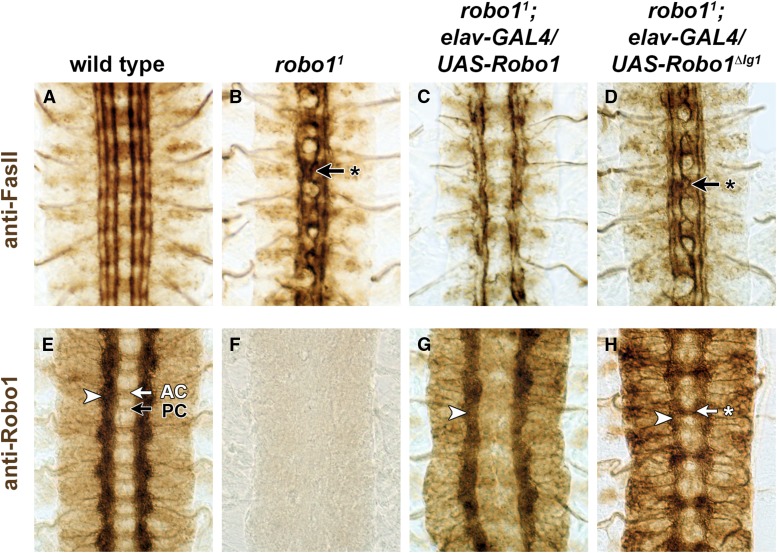Figure 3.
Pan-neuronal expression of Robo1ΔIg1 is unable to rescue midline crossing in robo1 mutants. Stage 16 Drosophila embryos stained with anti-FasII (top) or anti-Robo1 (bottom). In wild-type embryos, FasII-positive axons do not cross the midline (A), and Robo1 protein is localized to longitudinal axon pathways (arrowhead) but excluded from commissural axon segments in both the anterior commissure (AC, white arrow) and posterior commissure (PC, black arrow) (E). (B) In homozygous robo1 null mutants, FasII-positive axons ectopically cross the midline in 100% of segments (arrow with asterisk). Robo1 protein is undetectable in these embryos (F). When Robo1 expression is restored in neurons in robo1 mutants carrying elavGAL4 and UAS-Robo1, FasII axons no longer cross the midline (C), and Robo1 protein is again detectable on longitudinal pathways (G). Commissure formation is strongly inhibited in these embryos, and FasII pathways are disorganized. (D) Neuronal expression of Robo1ΔIg1 does not rescue midline repulsion in robo1 null mutants. (H) Robo1ΔIg1 protein is expressed on longitudinal pathways in robo1 mutant embryos carrying elavGAL4 and UAS-Robo1ΔIg1 (arrowhead), and is also detectable on axons as they cross the midline, especially in the anterior commissure (arrow with asterisk). For quantification of ectopic crossing phenotypes in the genotypes shown in (A–D), see Table 2.

